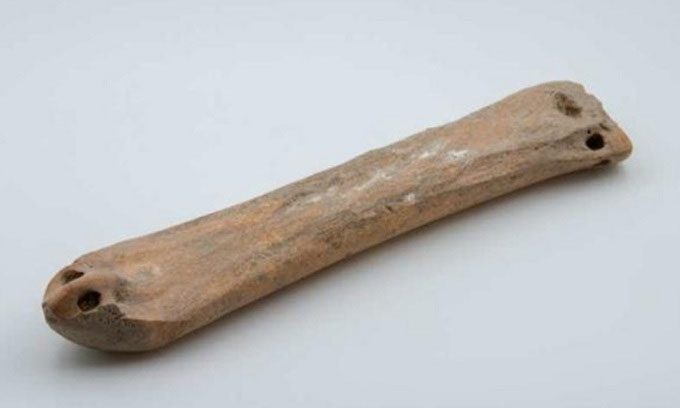Chinese Researchers Discover Ski Boots in the Tomb of a Wealthy Bronze Age Family in Xinjiang.

The ski boot found in Xinjiang closely resembles similar items from ancient Europe. (Photo: Global Times)
A team of archaeologists unearthed a pair of ski boots in the Xinjiang Uygur Autonomous Region of northwest China, as reported by Tech Times on February 27. The boots were discovered in a noble’s tomb in the Ili River Valley, crafted from horse and cow bones. According to the researchers, the item bears a striking resemblance to ski boots from ancient Europe. This finding provides clear evidence of connections between China and Europe during the Bronze Age, although the research team is still uncertain about why the inhabitants of Xinjiang were skiing on ice.
Xinjiang is known as the cradle of skiing. The animal bone ski boots represent the first discovery of their kind in China. Within the tomb, experts also found remnants of 40 wooden artifacts, including hard wooden wheels, shafts, and vehicle compartments.
The tomb is located near the Cao Dai Archaeological Site from the Bronze Age in the Ni Lakhke County of Xinjiang and is believed to belong to a wealthy pastoralist family. Based on the scattered artifacts, the research team speculates that many parts of the wooden vehicle were disassembled by the owner and buried during the tomb’s construction.
According to Ruan Qiurong, the lead archaeologist, the tomb will help him and his colleagues gain a better understanding of burial customs and social structures at the end of the Bronze Age. After years of excavation, researchers concluded that the Cao Dai site served as a burial ground for high-status individuals of a pastoral civilization. More than 500 artifacts have been discovered in the area, including pottery, stone jars, bronze items, and animal bones.
The Cao Dai site, a 120m2 complex of stone tombs, and a residential area located 1,000 meters away, are all part of the Jiren Taigoukou ruins in the Ili River Valley.





















































